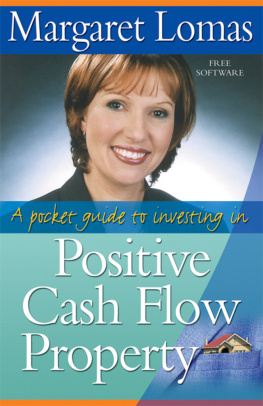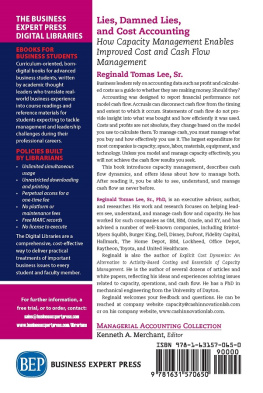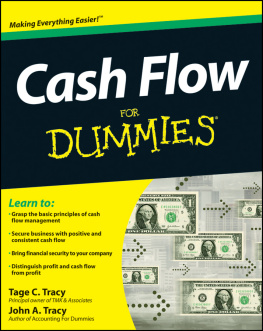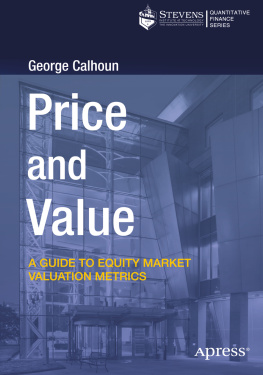FINANCIAL SHENANIGANS
THIRD EDITION
Howard M. Schilit
Jeremy Perler


Copyright 2010 by Howard Schilit. All rights reserved. Except as permitted under the United States Copyright Act of 1976, no part of this publication may be reproduced or distributed in any form or by any means, or stored in a database or retrieval system, without the prior written permission of the publisher.
ISBN: 978-0-07-170308-6
MHID: 0-07-170308-X
The material in this eBook also appears in the print version of this title: ISBN: 978-0-07-170307-9, MHID: 0-07-170307-1.
All trademarks are trademarks of their respective owners. Rather than put a trademark symbol after every occurrence of a trademarked name, we use names in an editorial fashion only, and to the benefit of the trademark owner, with no intention of infringement of the trademark. Where such designations appear in this book, they have been printed with initial caps.
McGraw-Hill eBooks are available at special quantity discounts to use as premiums and sales promotions, or for use in corporate training programs. To contact a representative please e-mail us at bulksales@mcgraw-hill.com.
This publication is designed to provide accurate and authoritative information in regard to the subject matter covered. It is sold with the understanding that neither the author nor the publisher is engaged in rendering legal, accounting, futures/securities trading, or other professional service. If legal advice or other expert assistance is required, the services of a competent professional person should be sought.
From a Declaration of Principles jointly adopted by a Committee
of the American Bar Association and a Committee of Publishers
TERMS OF USE
This is a copyrighted work and The McGraw-Hill Companies, Inc. (McGraw-Hill) and its licensors reserve all rights in and to the work. Use of this work is subject to these terms. Except as permitted under the Copyright Act of 1976 and the right to store and retrieve one copy of the work, you may not decompile, disassemble, reverse engineer, reproduce, modify, create derivative works based upon, transmit, distribute, disseminate, sell, publish or sublicense the work or any part of it without McGraw-Hills prior consent. You may use the work for your own noncommercial and personal use; any other use of the work is strictly prohibited. Your right to use the work may be terminated if you fail to comply with these terms.
THE WORK IS PROVIDED AS IS. McGRAW-HILL AND ITS LICENSORS MAKE NO GUARANTEES OR WARRANTIES AS TO THE ACCURACY, ADEQUACY OR COMPLETENESS OF OR RESULTS TO BE OBTAINED FROM USING THE WORK, INCLUDING ANY INFORMATION THAT CAN BE ACCESSED THROUGH THE WORK VIA HYPERLINK OR OTHERWISE, AND EXPRESSLY DISCLAIM ANY WARRANTY, EXPRESS OR IMPLIED, INCLUDING BUT NOT LIMITED TO IMPLIED WARRANTIES OF MERCHANTABILITY OR FITNESS FOR A PARTICULAR PURPOSE. McGraw-Hill and its licensors do not warrant or guarantee that the functions contained in the work will meet your requirements or that its operation will be uninterrupted or error free. Neither McGraw-Hill nor its licensors shall be liable to you or anyone else for any inaccuracy, error or omission, regardless of cause, in the work or for any damages resulting therefrom. McGraw-Hill has no responsibility for the content of any information accessed through the work. Under no circumstances shall McGraw-Hill and/or its licensors be liable for any indirect, incidental, special, punitive, consequential or similar damages that result from the use of or inability to use the work, even if any of them has been advised of the possibility of such damages. This limitation of liability shall apply to any claim or cause whatsoever whether such claim or cause arises in contract, tort or otherwise.
To Diane and Andrea
CONTENTS
PREFACE
What has been will be again, what has been done will be done again; There is nothing new under the sun.
ECCLESIASTES 1:9
Senior management at publicly traded companies, no doubt, yearn to report positive news and impressive financial results that will please investors and drive the share price higher. While most companies act ethically and follow prescribed accounting rules when reporting their financial performance, some take advantage of gray areas in the rules (or worse, ignore the rules altogether) in order to portray their financial results in a misleadingly positive way.
Managements desire to put a positive spin on financial results has been around as long as corporations and investors themselves. Dishonest companies have long used these tricks to prey on unsuspecting investors, and it is unlikely that they will ever cease to do so. As King Solomon observed in the book of Ecclesiastes, What has been will be again, what has been done will be done again. With the never-ending need to please investors, the temptation for management to exaggerate the positive through the use of financial shenanigans will always exist. The lure of accounting gimmickry is particularly strong at companies that are struggling to keep up with their investors expectations or their competitors performance. And while investors have become more savvy to these gimmicks over the years, dishonest companies continue to find new tricks (and recycle old favorites) to fool investors.
The original 1993 edition of Financial Shenanigans introduced readers to the world of corporate chicanery in the form of the seven Earnings Manipulation Shenanigans. The 2002 edition built on the original framework by identifying new techniques and presenting the worst offenders of the 1990s. With the wave of accounting frauds, restatements, and other financial reporting improprieties over the last decade, this third edition identifies many new techniques companies use to mislead investors. This book expands the discussion of Earnings Manipulation Shenanigans, introduces entirely new categories of shenanigans (Cash Flow Shenanigans and Key Metrics Shenanigans), and investigates new industries (banks and insurance companies) and new regions of the world (Europe and Asia) that have been hit with financial frauds.
Structure of the New Edition
This edition goes far deeper into the corporate bag of tricks than the earlier ones did, to give readers a comprehensive look at the various kinds of scams that are prevalent today. We have grouped these financial reporting shenanigans into three categories:
Earnings Manipulation Shenanigans reveals how companies manipulate the Statement of Income to report higher revenue, inflated profits, or improperly smoothed income.
Cash Flow Shenanigans discusses tricks used by companies to report misleadingly high cash flow measures, including cash flow from operations and free cash flow.
Key Metrics Shenanigans exposes how companies fool investors by showcasing misleading metrics that are being billed as key measures of business performance or economic health.
Postmortem: Lessons Learned from Financial Reporting Failures
We believe that the best training for professionals who are involved in preparing, auditing, or evaluating financial reports is an immersion in case studies to learn lessons from real-world financial reporting failures. Robert J. Sack, former chief accountant of the Division of Enforcement at the U.S. Securities and Exchange Commission (SEC), underscored this point by suggesting that accountants be trained more like medical students, who study cadavers to learn from history, stating:









